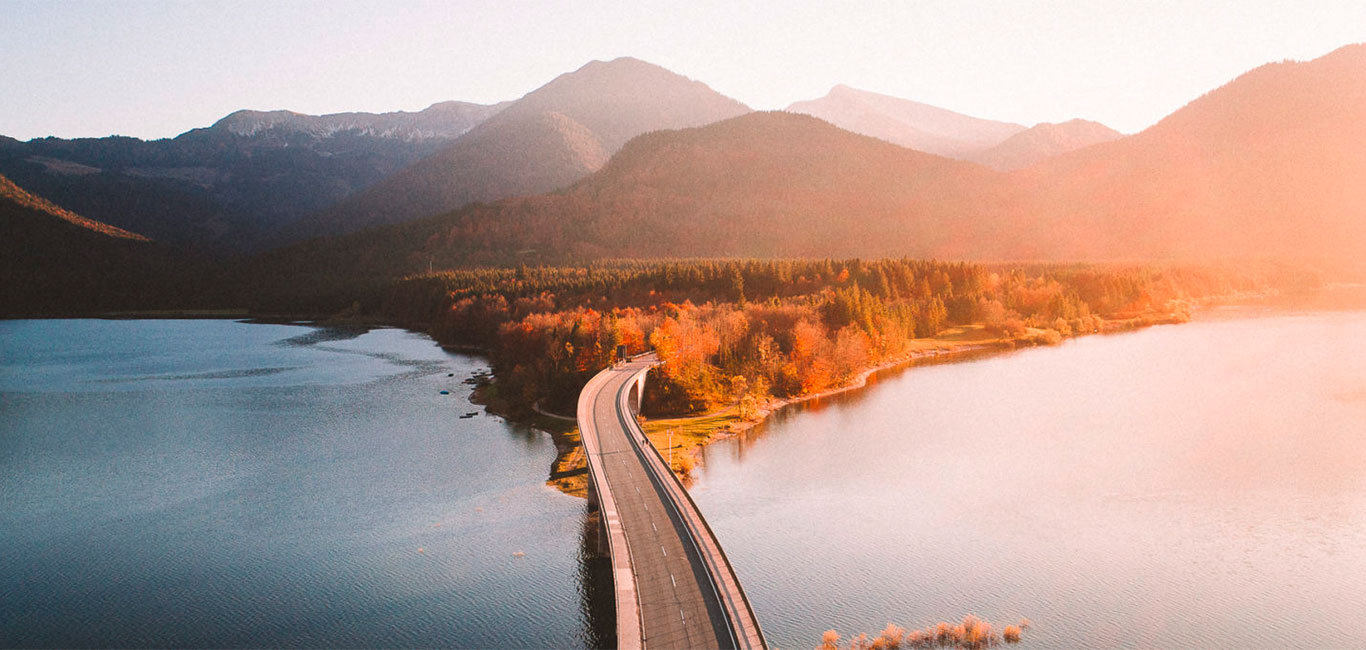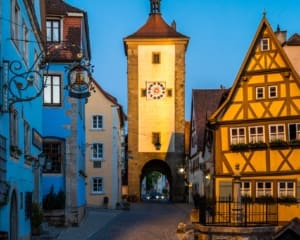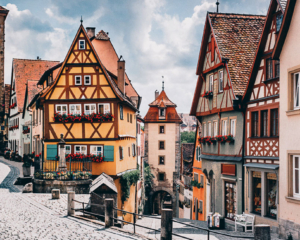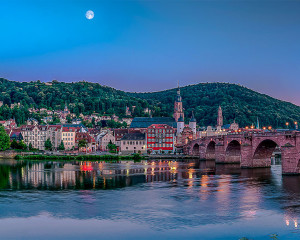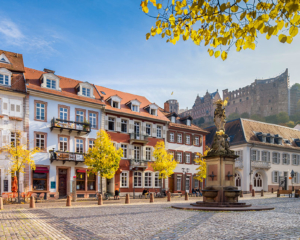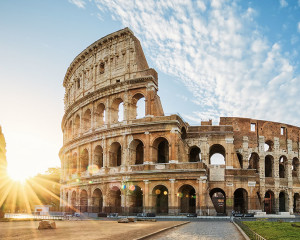The best trip itinerariers for a road trip in Germany
Since I bought my own camper, the motorhome travel guides with road trip suggestions are piling up. Here are my favorite routes for a road trip in Germany.
A road trip in Germany offers you the opportunity to discover the country in a relaxed and flexible way. From the beautiful beaches in the north to the Alps in the south of Germany, the following routes are ideal. Either as a single tour or combined if you have more than 1-2 weeks.
There are so many destinations in Germany that you can choose from. The best news is that there is no easier way to travel than in a motorhome. There are many companies that offer camper van rentals.
Who in Germany isn't looking for a spectacular road trip? But if you want to take a round trip in Germany, you're spoiled for choice with more than 150 great scenic routes. Some opt for a short trip through the whole of Germany to take in the highlights in one go. Neuschwanstein Castle, Cologne Cathedral, the Brandenburg Gate and the chalk cliffs on Rügen, to name just a few highlights.
I recommend that you decide on a region and enjoy the trip! Don't rush from place to place, relax every so often. After all, it's a vacation!
Tips for planning your road trip
Before you can start, you need to consider a few details. Have you rented a motorhome? Then check that everything is in order. There are now providers for every taste and budget.
Which type of campervan
Do you have your own camper van? Then you can skip to the next point. Still not sure which vehicle you should take on your road trip? Then consider whether you want to travel by car, VW camper van, the larger van version (with toilet, kitchen, and shower) or the larger motorhome.
Be sure to take a test drive because not everyone wants to drive a large vehicle through narrow streets and alleyways. There are some narrow roads lined with trees along the avenue road on Rügen. In the Alps, there are narrow serpentine roads that not everyone wants to travel with a large motorhome. This is neither the US or Australia with less traffic and huge highways. We have scenic roads, which tend to be narrow.
Get your rental motorhome from CamperDays and use their search engine. Here you will find most of the well-known rental companies for motorhomes and camper vans.
Climate protection and a road trip - is that possible?
Please always bear in mind that a lot of CO-2 is released on a road trip. That's why I've been offsetting CO-2 for every kilometer driven in each year by car. You can calculate your emissions on websites and neutralize them.
There's no question that traveling by train or bike would be more environmentally friendly. Unfortunately, I'm not quite as flexible without a car, as I like to set off very early in the morning to avoid lots of people.
How long?
Counter question: How long do you have? My suggestions are based on routes that you can "do" in a weekend (or even just for one day), or travel at a more leisurely pace. Then you can experience more, relax and don't have to rush from place to place.
I wouldn't want to do a round trip through the whole of Germany in two weeks. After all, I want to explore the places and not just take photos.
I recommend a whole day just for the chalk cliffs in Jasmund National Park on Rügen. I also recommend a longer stay for Neuschwanstein Castle. Because there are great hikes, lakes and other castles to explore all around. In Berchtesgaden, the influx of tourists is exploding. Here, too, you have to plan for longer waiting times at the cable cars.
However, if you only have a long weekend to a week, you can also travel the trips in sections. This is also worthwhile.
Translated with DeepL.com (free version)
Navigation: Route planner without "Autobahn"
I use Google Maps for navigation. You can easily set the app to avoid highways:
Enter your route. The route will be displayed.
There is an options field below the field for departure and destination. Click on this to make precise settings for your route.
Now check the box to avoid highways. Google will immediately calculate alternatives.
Other alternatives are navigation devices specifically for motorhomes. These are really cool and I would like to try them out. The Garmin 890 sat nav is ideal for campers. You can enter the dimensions of your car here. The sat nav only shows you the routes that you can drive with it. Ingenious! You can also display parking spaces and places of interest ("worthwhile stops").
Great camper van travel guides for Germany
Since I've owned my camper van, the camper travel guides with road trip suggestions have been piling up. Here is my favorite:
Day trips in Germany
- Schwarzwaldhochstraße: Black Forest High Road from Freudenstadt to Baden-Baden
- Along the Moselle River from Trier to Cochem
- Baltic Sea: Around the Bodden near Fischland-Darß-Zingst
- The Allgäu Region: Around Füssen and Oberstdorf
- Southern Germany's highest panoramic road: Roßfeldpanoramastraße from Berchtesgaden over the Obersalzberg
- Short trip through the Tauber Valley
- Day trip along the Neckar River from Stuttgart via Heilbronn to Heidelberg (from Heilbronn on the Burgenstraße)
Campsites and alternatives
For road trips, I like to recommend spending the night on motorhome pitches. Even though many people "advertise" wild camping, I unfortunately have to emphasize this: It's forbidden. Period. Ignore Instagram and co. where freestanding is "advertised" to you. If you are staying in one place for longer, a campsite can also be worthwhile. There are nature campsites in forests with plenty of space all over Germany.
Alternatively, I recommend the Landvergnügen campsite guide. You buy the book, get a vignette and can then stay overnight on farms, wineries or breweries for a year.
Are you ready to discover Germany by motorhome now?
Route suggestions to help you plan your trip
Here you will find a selection of the most beautiful routes for a road trip to get closer to Germany's beautiful landscape and nature. No matter whether you want to go for a long weekend or a 2-week vacation.
Deutsche Alpenstraße (German Alpine Road)
- Best for: Nature lovers, active travelers or those interested in culture. Ideal mix of everything.
- Highlights: Neuschwanstein Castle, Allgäu and Bavarian Alps, great mountain lakes
- Start: Lindau to Schönau
- Stops: Lindau - Oberstaufen - Breitachklamm - Füssen - Neuschwanstein Castle - Hohenschwangau - Oberammergau - Garmisch-Partenkirchen - Bad Tölz - Rottach-Egern - Oberaudorf - Chiemgau - Königssee - Berchtesgaden
- Distance: 500 km
- How long: 1-2 weeks
- Best time to travel: May - June or September - October. Overcrowded and very popular in summer.
- Insider tip: Winter camping, traveling spontaneously from site to site outside Christmas and New Year's Eve
Description to follow
The road leads from Lindau on Lake Constance over numerous bends all the way to Berchtesgadener Land. The panoramic road is anything but an insider tip. The beautiful route is naturally popular. For me, it is therefore the most beautiful of all the routes presented.
The landscape is very varied. You are spoiled for choice between mountain lakes, panoramic views on hikes to the summits or the more than 25 castles, fortresses, and monasteries. Of course, Neuschwanstein Castle is the highlight.
Around the Zugspitze, which is situated in Garmisch-Partenkirchen you will find numerous hiking trails of all levels of difficulty. In winter, you will find great ski areas and cross-country ski trails. Snowshoe hikes are also possible almost everywhere (depending on snow conditions).
My favorite areas for skiing in winter: Fellhorn - Kanzelwand ski area, Bolsterlang, Balderschwang.
View the complete route with all tips here on the official website of the German Alpine Road
Accommodation options
There are campsites and motorhome pitches all along the route. I recommend avoiding peak travel times. If you have children of school age, you need to plan well in advance:
Insider tip
- Book a night in an igloo on the Zugspitze in winter.
- There is a large Salomon outlet with other outdoor brands in Füssen.
The route to follow
Burgenstraße (Castle Road)
- Best for: History buffs, lovers of castles and palaces (more than 60 along the themed route)
- Highlights: Heidelberg Castle, Bad Wimpfen, Heilbronn, Schwäbisch Hall, Rothenburg ob der Tauber, Nuremberg Imperial Castle, Bamberg (see alternatives)
- Start: Mannheim to Bayreuth
- Stops: Heidelberg - Neckar valley via Bad Wimpfen to Heilbronn - (Breitenauer See) - Rothenburg o.d.T. - Nuremberg - Bamberg - Coburg - Bayreuth
- Distance: 780 km
- How long: 7 - 10 days
- Best time to travel: Due to the route along wine regions, September - October.
Description of the camper van tour
One of the most beautiful roads around my hometown of Heilbronn is the Castle Road. The route leads from Mannheim via Heidelberg, then along the Neckar, with many castles along the river.
In Heidelberg, apart from the castle, you should explore the old town and walk along Schlangenweg and Philosophenweg for the best views.
I probably can't write neutrally about the rest of the route via Hornberg Castle, Guttenberg Castle, Bad Wimpfen to Heilbronn. I grew up in this region and still live in Heilbronn. I love my home on the Neckar with its castles and vineyards.
The route continues via Weibertreu Castle (Weinsberg) to the half-timbered town of Schwäbisch Hall. Rothenburg ob der Tauber is a particular highlight. For me, it is one of the most beautiful towns in Germany. The little alleyways with half-timbered houses and turrets - oh, it's so beautiful!
Nuremberg with the Imperial Castle towering over the city and Franconian Switzerland between Bamberg, Nuremberg and Bayreuth will also inspire you. Make sure you plan more time here. Ideal for hiking and a stop at a brewery cellar with smoked beer.
Then it's a short trip to Thuringia to the Veste Heldburg, which was built on a 403-metre-high rock like in a fairy tale. You will end your road trip in Bayreuth with its historic center and the Richard Wagner Museum.
Accommodation options
You can spend the night in many castles along the route. Hornberg Castle, Steinsberg Castle, Colmberg Castle, Abenberg Castle and Rabenstein Castle are also hotels.
There are numerous campsites and pitches along the route. You are also well advised to use the Landvergnügen pitch guide. In Heilbronn, you can park for free at the wine cooperative with a wonderful view over the vineyards. Alternatively, you can stay overnight for free if you buy wine for over 50 euros at the WG.
Tip for Rothenburg ob der Tauber: The P2 motorhome parking space in Rothenburg ob der Tauber is located right next to the old town. It costs (2021) 12 euros per night, electricity and water supply/disposal is available. There are 50 pitches, but I recommend that you don't choose one close to the road. The local "posers" like to do their rounds loudly at night along the road or in the parking lot opposite.
After your stop in Heilbronn, take a detour to Lake Breitenau on the way to Öhringen. Our local recreation area in the Löwenstein mountains has a campsite right by the lake.
Insider tip
If you have time, hike a stage of the Neckarsteig. The 1st stage near Heidelberg is one of the most beautiful.
Spend at least one day in my hometown of Heilbronn. Visit the Experimenta, Germany's largest science center. Enjoy the old town of Bad Wimpfen, take a tour of the Audi factory in Neckarsulm and visit the raptor station at Guttenberg Castle (Haßmersheim).
The route to follow
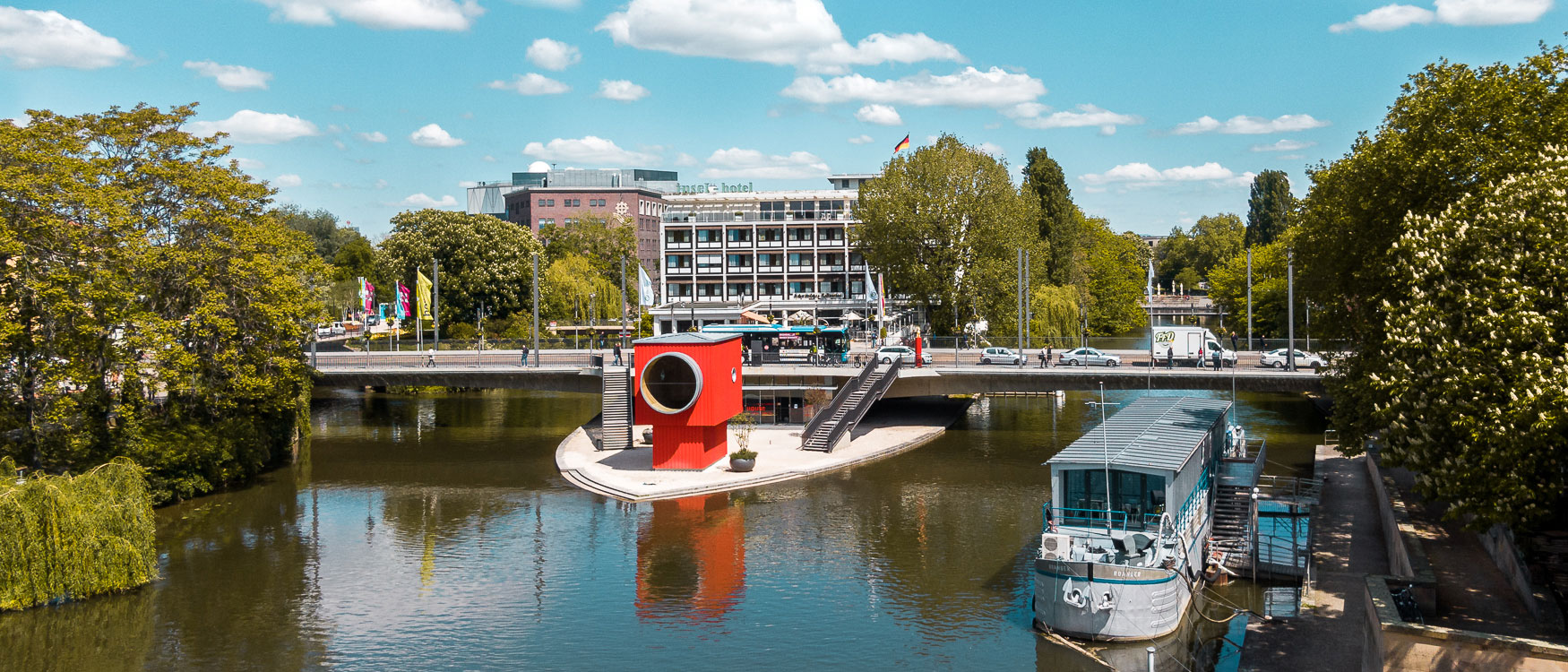
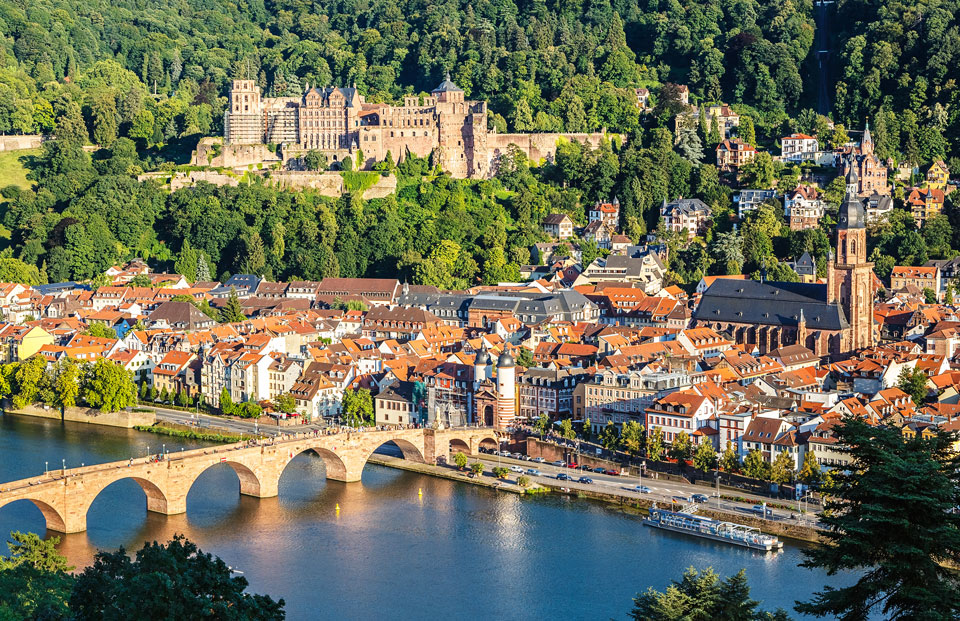
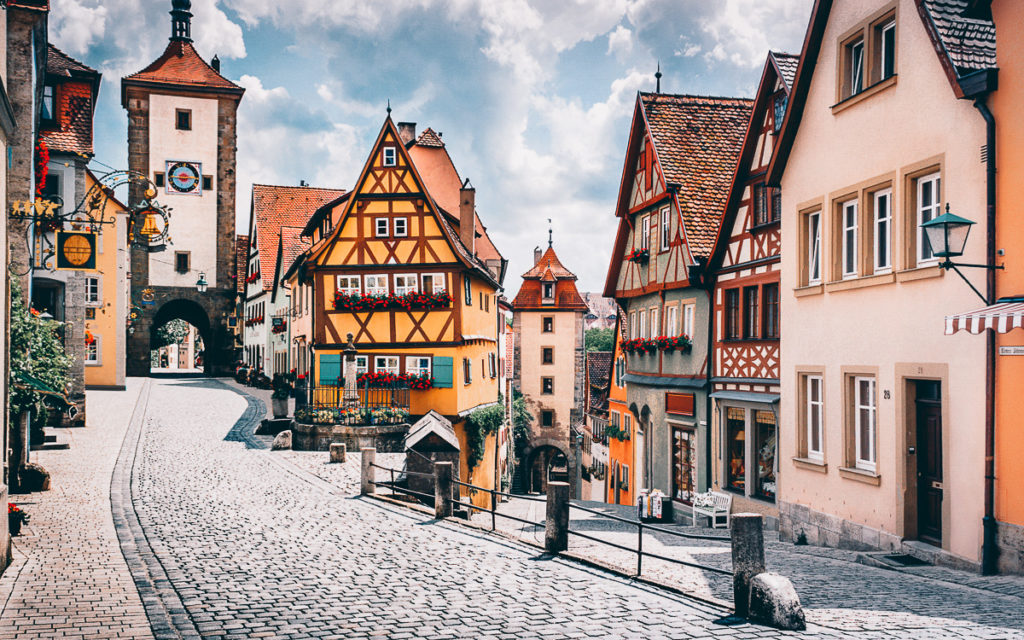
Black Forest - Lake Constance - Swabian Alb
- Best for: Nature, water and culinary delights
- Highlights: Triberg waterfalls, Gutachtal, Titisee, Schluchsee, Constance and Meersburg on Lake Constance, Hohenzollern Castle
- Start: Round trip from/to Stuttgart
- Stops: Stuttgart - Triberg - Hornberg - Titisee - Schluchsee - Wutach Gorge - Constance - Meersburg - Unteruhldingen pile dwellings - Swabian Alb - Upper Danube Valley - Beuron Monastery - Hohenzollern Castle - Stuttgart
- How long: 7 to 10 days (also longer, as there are many places worth seeing along the route)
- Best time to travel: All year round, possibly with snow in winter.
Description of the camper van tour
Start your round trip in Stuttgart. The Porsche Museum is a must for car fans. Alternatively, or afterwards, the Mercedes-Benz Museum is well worth a visit.
Then you leave the city and a spectacular section follows. The drive into the famous Black Forest with its winding Black Forest High Road awaits you! The tall trees, hairpin bends and constant viewpoints will give you that road trip feeling.
This section is around 60 km long and leads from Baden-Baden to Bühlerhöhe. I love the views, which in some places extend as far as the Vosges mountains in France! Other stops are the Mummelsee, Hornisgrinde and a possible place to spend the night is Freudenstadt.
The tour continues to one of the most beautiful vacation regions in Germany: Lake Constance. Explore the region with Constance, Friedrichshafen, the pile dwellings at Unteruhldingen and Meersburg. Take the route back to Stuttgart via the Swabian Alb and the Upper Danube Valley. If you feel like it, you can visit Beuron Abbey, the view of the Beuron basin from the Knopfmacherfelsen rock and Hohenzollern Castle at the end. What a trip!
You can find a detailed travel report here: Roadtrip ab Stuttgart in den Schwarzwald bis zum Bodensee
Further articles with tips on the regions mentioned:
- Bodensee: Sehenswürdigkeiten mit den schönste Orte & Aktivitäten
- Konstanz: Sehenswerte Orte & Highlights
- Meersburg am Bodensee
- Geheimtipps für Stuttgart
Accommodation options
On this motorhome tour you will find many options, as this region is extremely popular for camping with a tent, motorhome or caravan. On Lake Constance, I recommend the pitch in Fischbach. In the Black Forest, the small nature campsites.
My tip: decide on the way where you want to stay overnight. Alternatively, there are still plenty of farms that take part in Landvergnügen.
Map with the route to follow
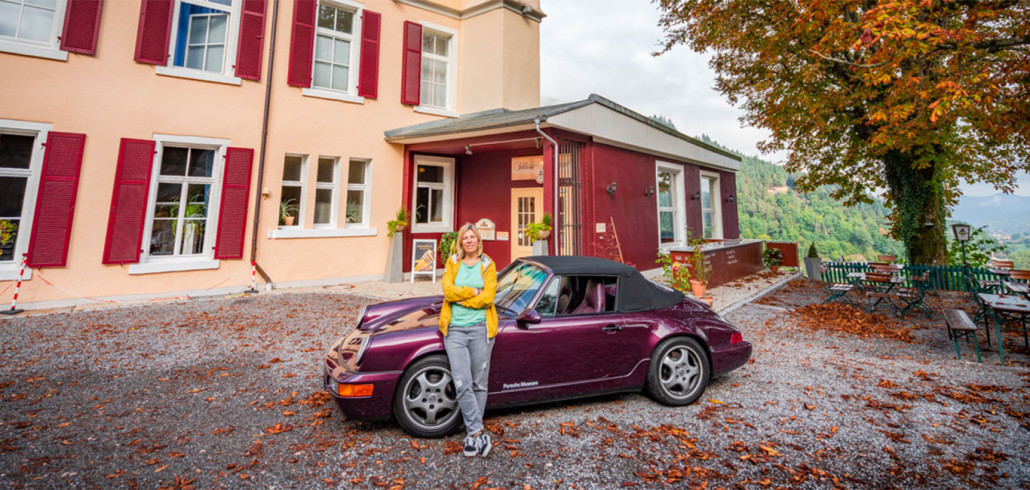
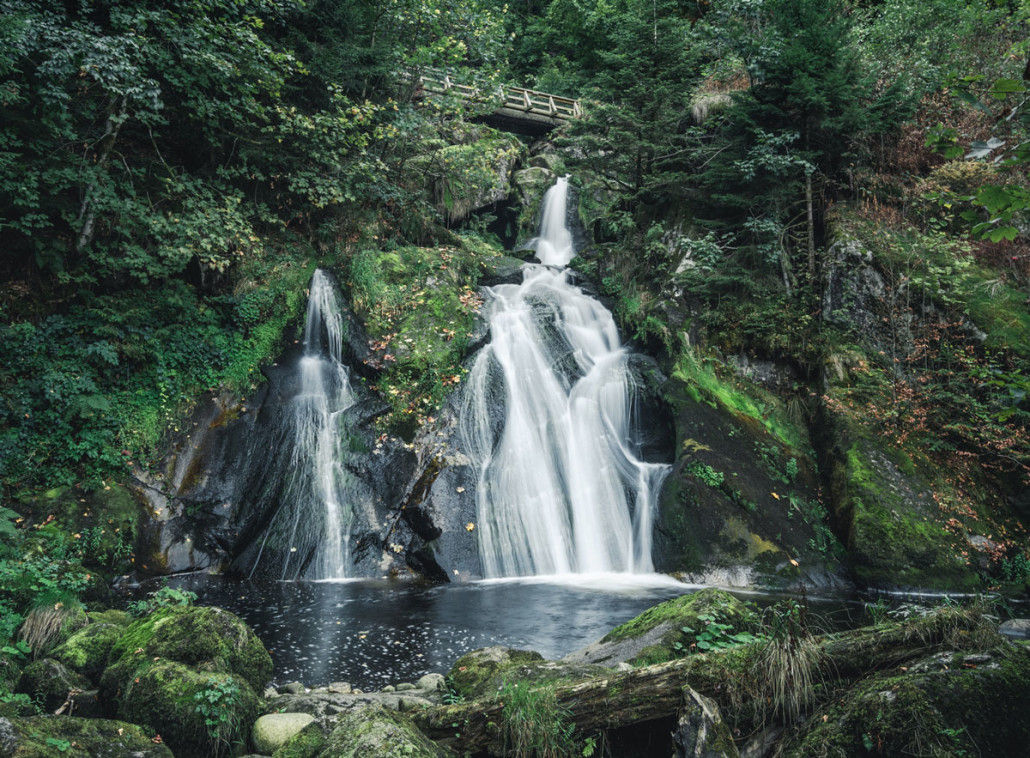
Deutsche Alleenstraße (German avenue road)
- Best for: Anyone who wants to take a road trip through Germany and experience the diversity up close.
- Highlights: Rügen, Stralsund, Dessau, Fulda, Dortmund, Freudenstadt, Reichenau
- Start: Island of Rügen (Putgarden), End: Reichenau (Lake Constance)
- Route: There are 3 routes: the main route, the NRW route (Dortmund) and the Saxony-Thuringia loop (Dresden and Plauen). I recommend: Rügen - Stralsund - Grimmen - (Greifswald) - Waren (Müritz) - Neuruppin - Brandenburg a.d. Havel - Lutherstadt Wittenberg - Dresden - Dessau - Goslar - Duderstadt - Plauen - Fulda - Koblenz - Bad Kreuznach - Bad Dürkheim - Freudenstadt - Tübingen - Ravensburg - Meersburg - Konstanz - Reichenau.
- Length of the route: 2,900 km (depending on the route chosen)
- How long: At least 2 weeks, preferably 3 weeks.
- Best time to travel: Fall
Description
The avenue route is the longest vacation route in Germany. Here you can get to know your home country from north to south. It takes you around 2900 kilometers from the Baltic Sea island of Rügen right across Germany to Lake Constance. You will pass 10 federal states along the way, sounds great, doesn't it?
The route starts on the most beautiful Baltic Sea island of Rügen in the far north (Putgarden). Some sections are really narrow, especially with a motorhome. The trees line the avenues, it's a dream.
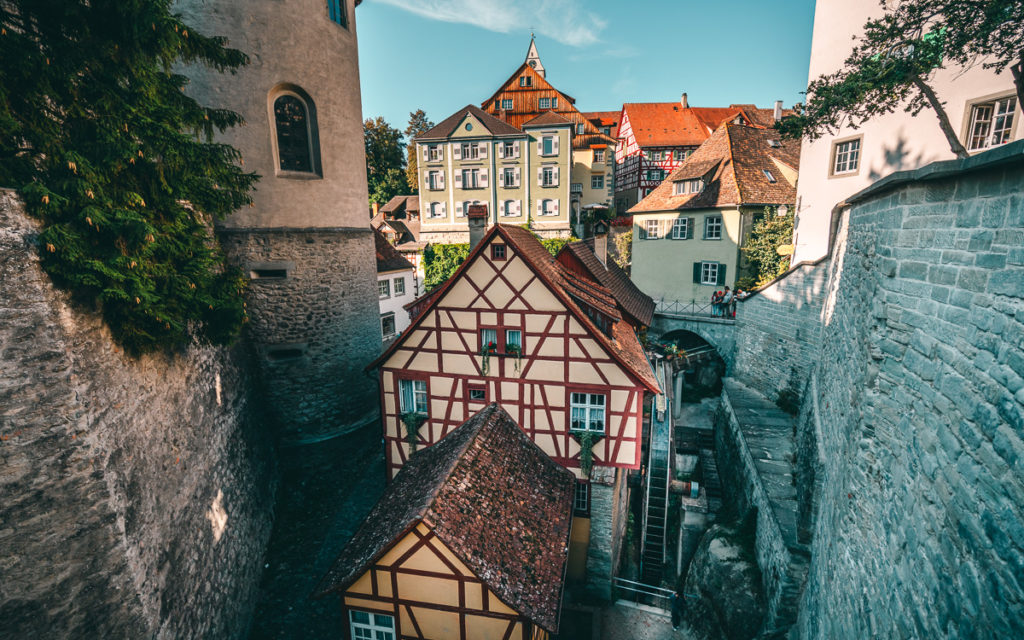
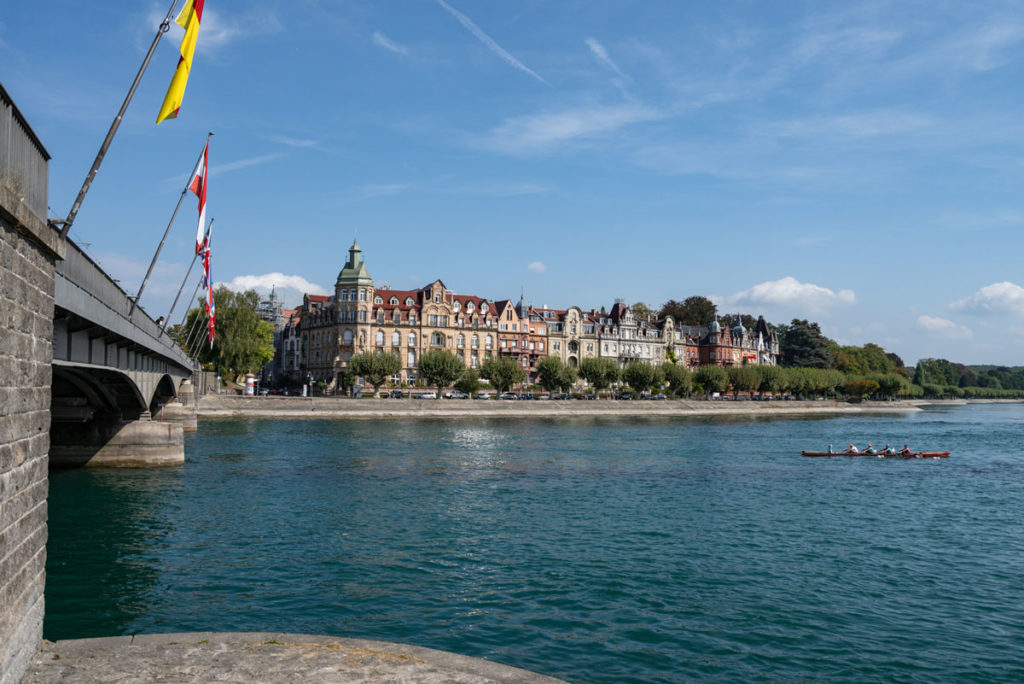
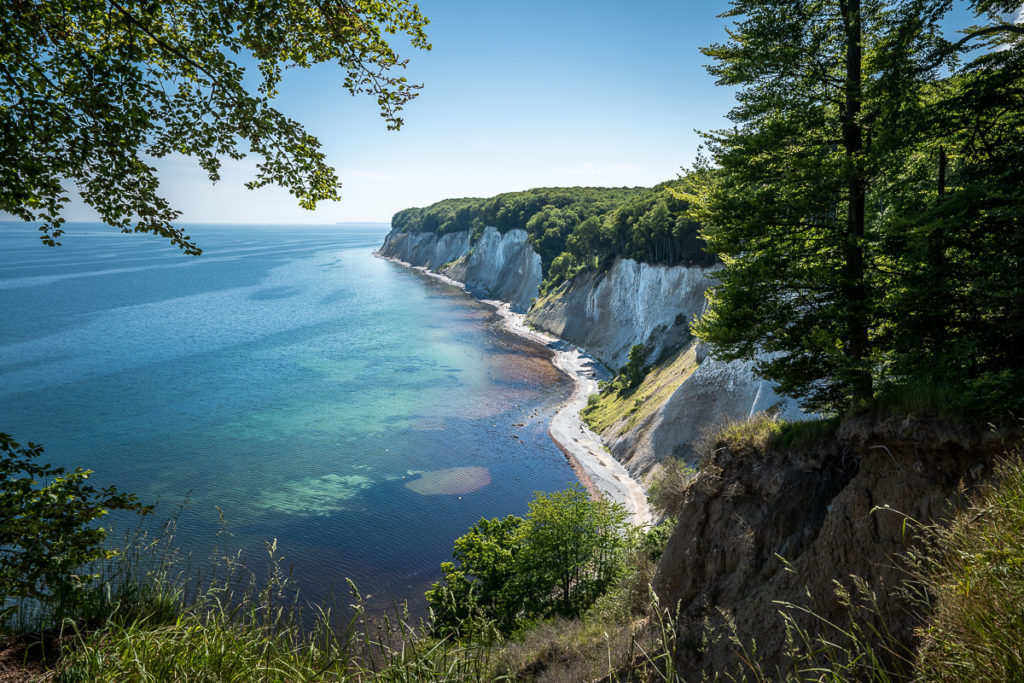
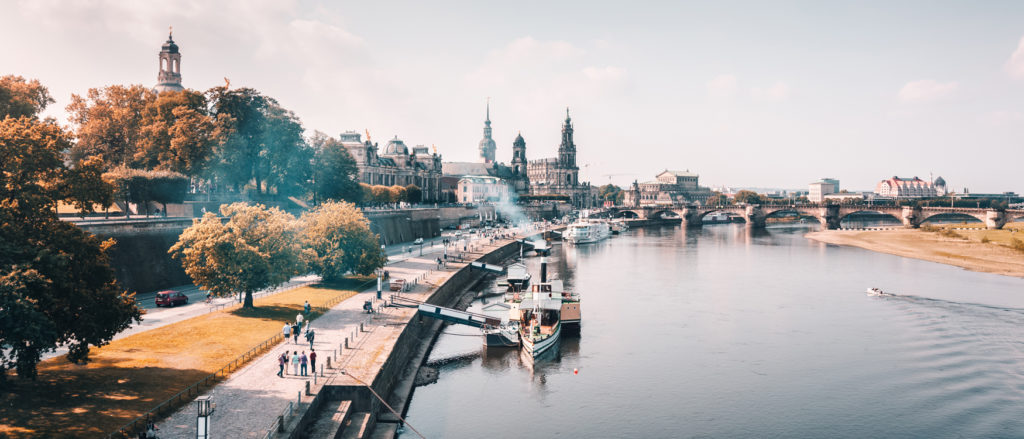
Deutsche Fachwerkstraße (German Half-Timbered House Route)
- Best for: Anyone who wants to take a road trip through Germany and also wants to discover lesser-known places with beautiful half-timbered houses.
- Highlights: Schwäbisch Hall, Besigheim, Bad Wimpfen, Wertheim Castle
- Start: No matter where, because round trip.
- Route: Wertheim - Tauberbischofsheim - Schwäbisch Hall - Schorndorf - Esslingen am Neckar - Waiblingen - Backnang - Marbach am Neckar - Bietigheim-Bissingen - Markgröningen - Leonberg - Vaihingen an der Enz - Maulbronn - Besigheim - Bad Wimpfen - Mosbach - Wertheim
- Length of the route: 369 km
- How long: At least 3 - 5 days, if you want to explore everything, you should plan a week
- Best time to travel: Autumn (numerous vineyards, like in "Indian Summer", only in Germany)
Description
The German Half-Timbered House Road, under the motto "Fachwerk verbindet" (half-timbered houses connect), takes you all over Germany on 3,500 km from the Elbe to Lake Constance. Officially, there are seven regional routes that take you through the federal states of Lower Saxony, Saxony-Anhalt, Saxony, Hesse, Thuringia, Bavaria and Baden-Württemberg.
However, I have created my own route. Around my home region, I know where the beautiful half-timbered towns are.
I like the small towns with narrow streets and beautifully crooked half-timbered houses. That's why I'm sure I'll be exploring other routes along the German Half-Timbered Road.
Accommodation options
Along this route you will also find motorhome parking spaces everywhere, which are often even free of charge (for example in Tauberbischofsheim, quiet but not beautiful). For Werheim, I recommend the parking space in Kreuzwertheim on the other side of the Main with a great view of the castle. Please note: It can get hot here in summer, however, as none of the pitches offer any shade.
Follow my route on the map
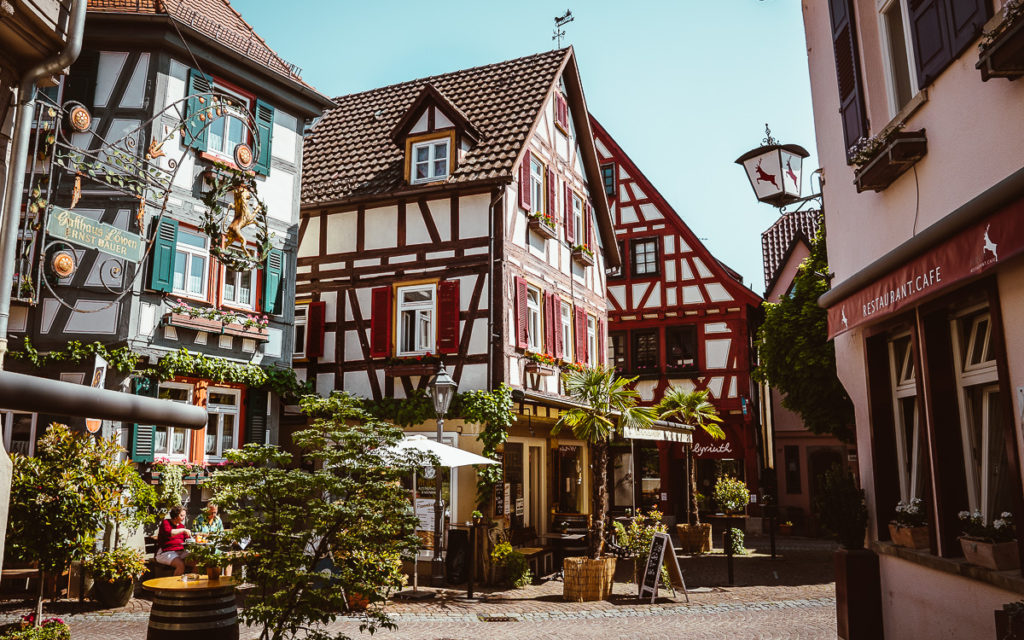
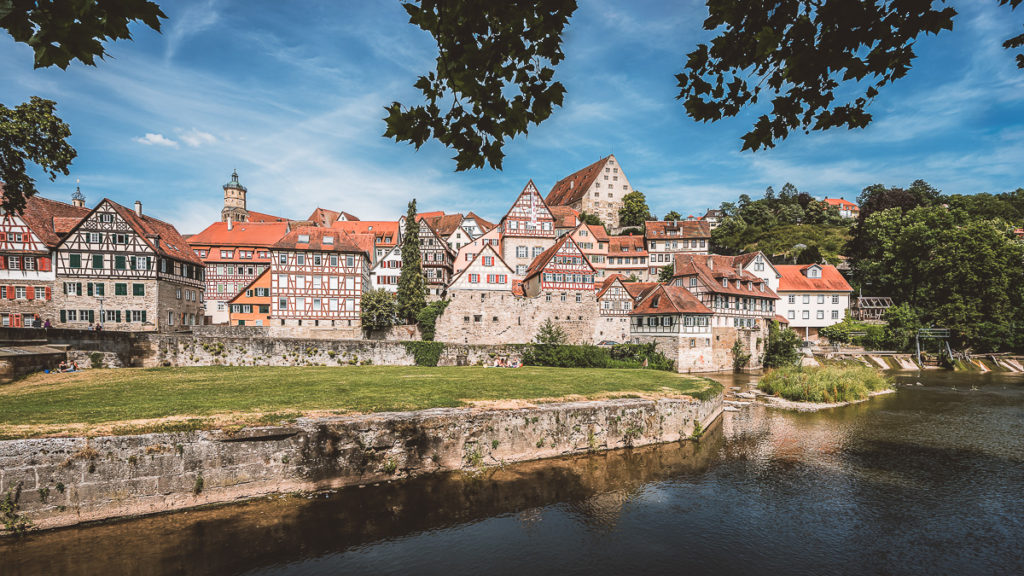
Deutsche Märchenstraße (German Fairytale Route)
- Best for: On the trail of the fairytale world of the Brothers Grimm. Fans of myths, legends, castles and palaces.
- Highlights: Birthplace of the Brothers Grimm: Hanau, Marburg, Hamelin, Bremen
- Start: Hanau or Bremen
- Route: Hanau - Steinau a. d. Straße - Marburg - Kassel - Göttingen - Hameln - Bremen
- Length: 1,035 km. There are two alternative routes: Alternative 1: 1,030 km and Alternative 2: 540 km
- How long: At least 1 week, as there are theoretically 50 stops waiting for you
- Best time to travel: All year round
Description
Are you in the mood for mystical forests and picturesque landscapes? Would you like to discover the fairytale world of childhood along this exciting route? The route from Hanau to Bremen offers numerous opportunities to do so. Stories from the well-known fairy tales of Mother Hulda, Sleeping Beauty, the Town Musicians of Bremen and Snow White make this road trip a real event!
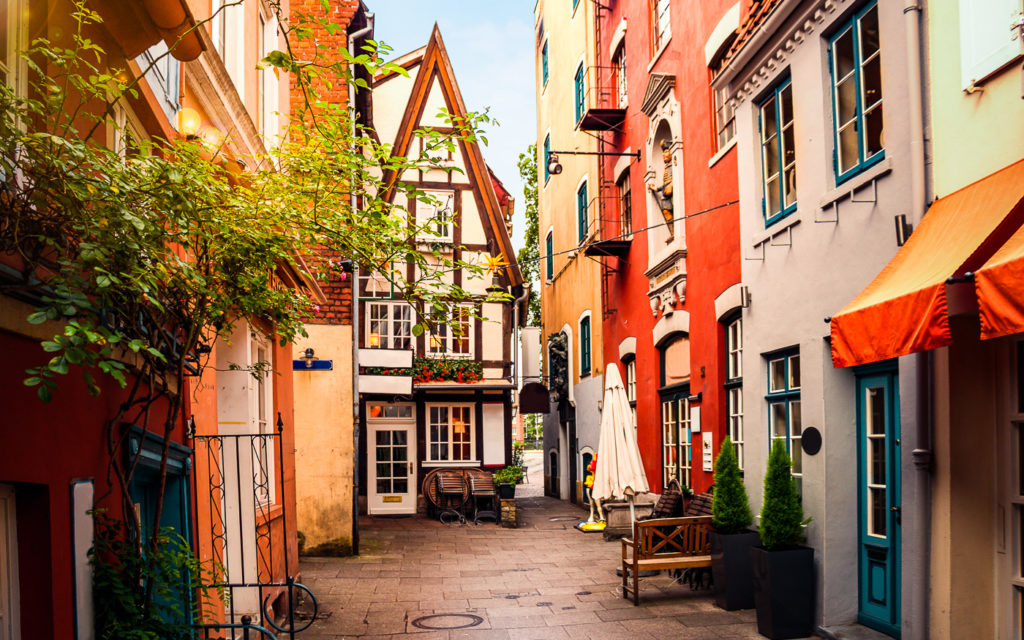
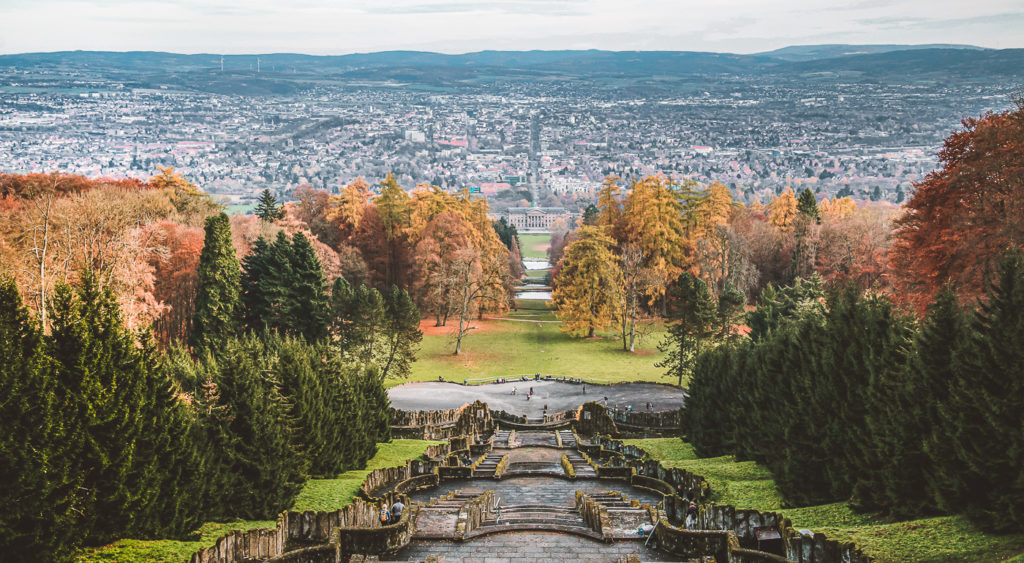
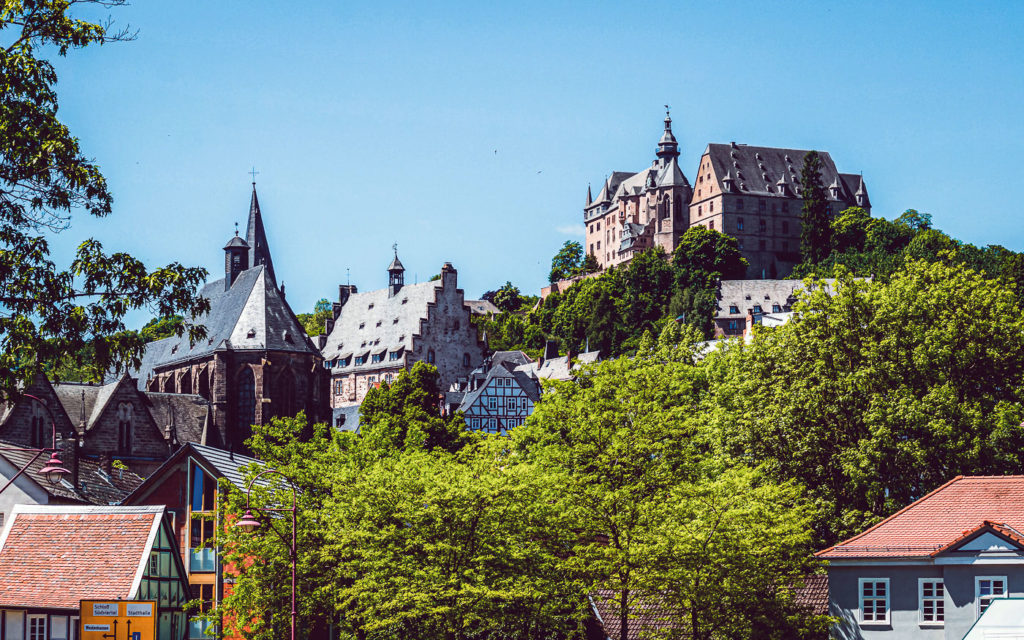
Deutsche Weinstraße (German Wine Route)
- Best for: Wine lovers - there are many fine wines along the route. Castles, palaces and half-timbered houses.
- Highlights: Reichenburg Trifels, Hambach Castle, Hardenburg, Palatinate Forest Nature Park, Bad Dürkheim and Neustadt an der Weinstraße
- Start: Frankfurt or Strasbourg (Alsace, France)
- Route: Frankfurt - Bockenheim - Deidesheim - St. Martin - Siebeldingen - Bad Bergzabern - Schweigen-Rechtenbach - Strasbourg
- Length of the route: 263.9 km
- How long: At least 3 days, a week is better
- Best time to travel: March to October. Check where and when wine festivals take place.
Description:
The German Wine Route is the oldest route of its kind, having been in existence since 1935. The road trip leads through the heart of the largest continuous wine-growing region in Germany: the Palatinate.
Another superlative is Germany's largest contiguous forest area: the Palatinate Forest. You will also cycle through it. The route is also suitable for beginners with a camper van.
Along the route from the start in Schweigen-Rechtenbach at the German Wine Gate on the border with France (I advise you to visit Strasbourg as well) to Bockenheim, you will pass not only vineyards but also huge orchards, forests, castles and fortresses.
Thanks to 1800 hours of sunshine a year, good weather is almost guaranteed on the road trip.
Route with map and highlights along the German Wine Route
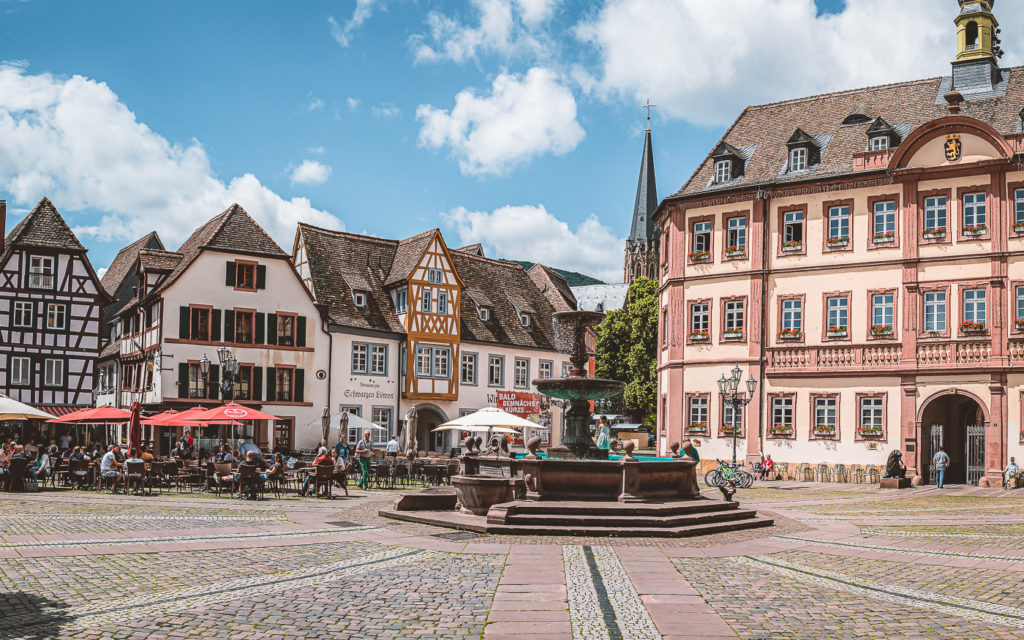
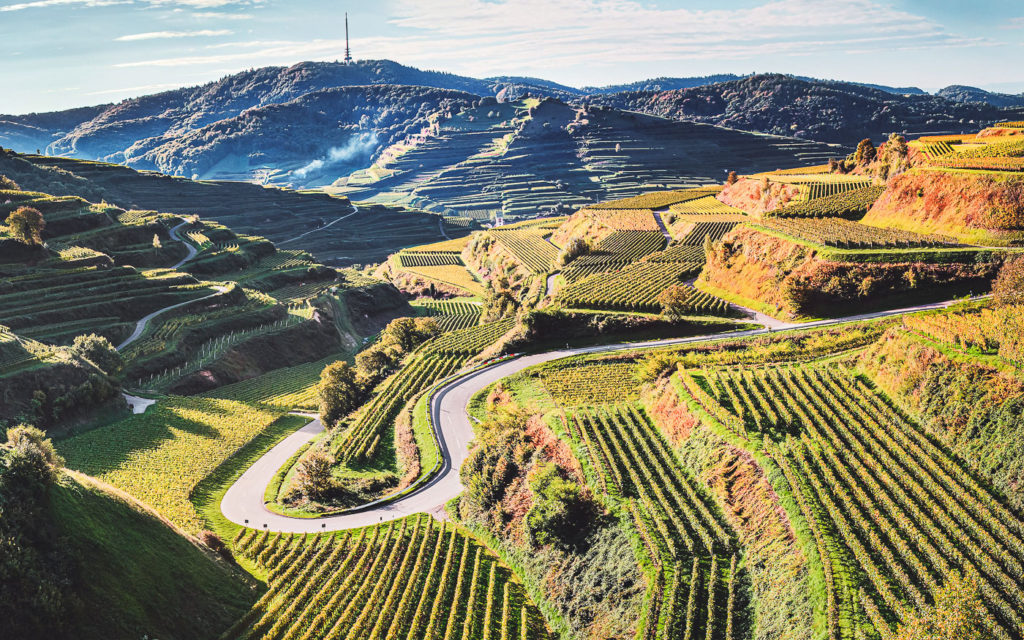
Deutsche Vulkanstraße (German Volcano Route)
- Best for: Volcanism, geology, nature and hiking
- Highlights: Maria Laach Monastery, lava dome in Mendig, volcano museum in Daun, Ulmen maar, mineral springs near Gerolstein
- Start: Lake Laach
- Route: Maria Laach Abbey, Glees - Eppelsberg - Meurin Roman mine - Mendig - Wingertsbergwand - Mayen mines - Gerolstein - Maar Museum, Manderscheid (various other stops available)
- Length of the route: 280 km
- How long: 3–4 days, ideal for a short trip
- Best time to travel: All year round
Description
There are no longer any active volcanoes in Germany. However, traces of them still shape the landscape of the Volcanic Eifel today. The Volcano Road route takes you 280 km past water-filled craters, geysers, cinder cones and traces of lava flows. There are several sights along the route.
Accommodation options
There are parking spaces everywhere along the route. In Gerolstein, for example, there is one for 25 spaces (6 euros including waste disposal) directly at the indoor swimming pool. In Pulvermaar, there is space for around 30 vehicles on a meadow at the edge of the Pulvermaar.
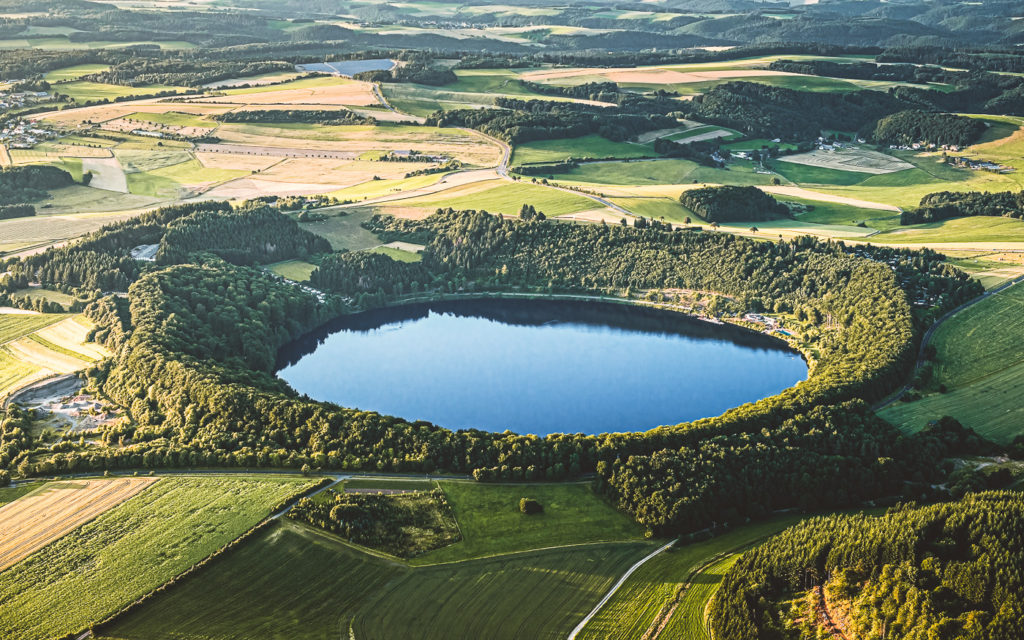
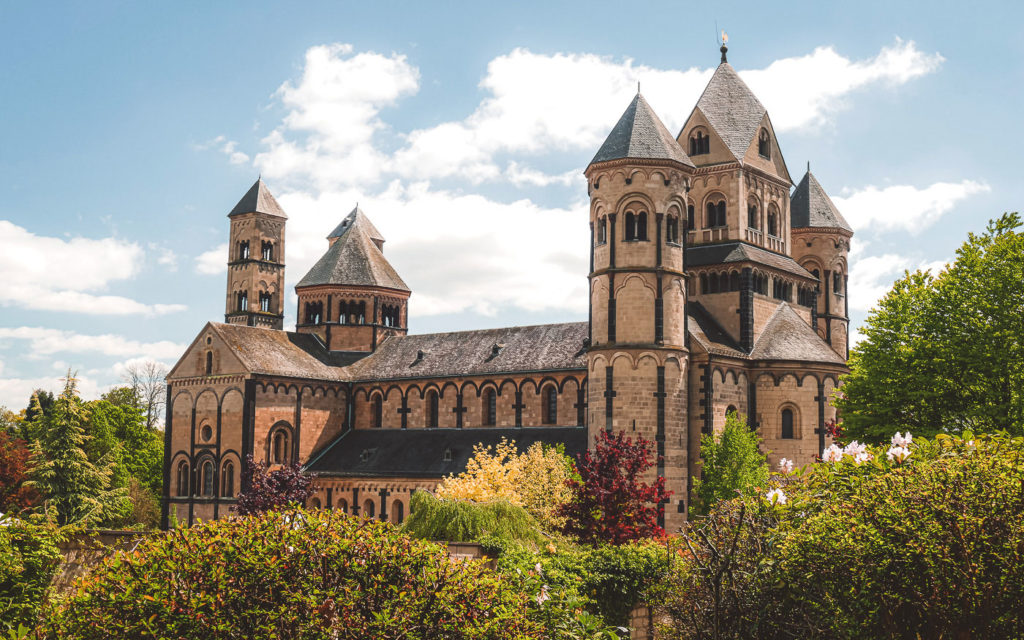
Romantic Road (Romantische Straße)
- Best for: Exploring romantic little towns
- Highlights: Neuschwanstein Castle, Rothenburg ob der Tauber and the lesser-known picturesque towns in between.
- Start: Würzburg or Füssen
- Route: Würzburg - Tauber Valley - Rothenburg ob der Tauber - Augsburg - Neuschwanstein Castle - Füssen
- Length of the route: 400 km
- How long: At least 1 week
- Best time to travel: All year round, although Bavaria and the Allgäu are quite crowded in summer.
Description
On the 400 kilometers from Würzburg to the Allgäu, you can cross some of the most beautiful scenic corners in Germany on this route. The highlights are, of course, Neuschwanstein Castle and Hohenschwangau near Füssen. But you shouldn't neglect the castle in Würzburg, either.
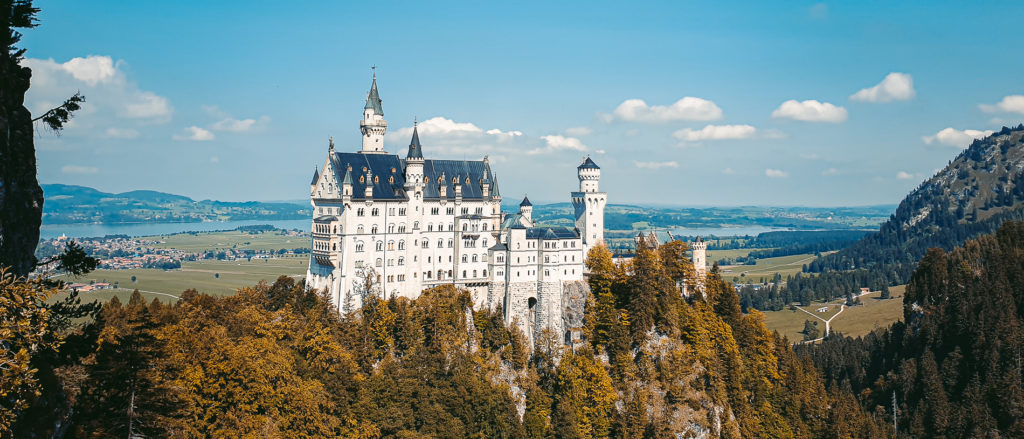

Nordic UNESCO World Heritage Route No. 1
There are a total of eight UNESCO World Heritage Routes in Germany. The most beautiful is the Nordic Route No. 1.
- Best for: Wonderful Hanseatic cities and the most beautiful places on the Baltic Sea coast to the North Sea to the Wadden Sea World Heritage Site
- Highlights: Jasmund National Park on Rügen, Stralsund, Wismar, Bremen, Hamburg, Lübeck, and the Wadden Sea near Bremerhaven.
- Start: Bremerhaven or Sassnitz (island of Rügen)
- Route: Wadden Sea - Bremen – Hamburg – Lübeck – Wismar – Stralsund - Island of Rügen
- Length of the route: 557 km
- How long: At least 2 weeks, 3 weeks is better
- Best time to travel: Spring, summer and fall
Description
Do you like the sound of riding along the most beautiful places on the Baltic Sea to the North Sea coast? It is. That's exactly what I did for 6 weeks in the summer (the advantage of being self-employed and able to work on the road).
That's why I don't want to write much here, but rather link to the articles with lots of details, information, accommodation and motorhome pitches.
- Roadtrip entlang der Ostseeküste, Ostsee Camping ist wunderbar!
- Highlights in Hamburg
- Die schönsten Orte in Lübeck
- So entdeckst du die schönste Hansestadt Wismar
- Stralsund an einem Wochenende: Highlights und Tipps
- Insel Rügen: Sehenswürdigkeiten, Tipps und Ausflugsziele
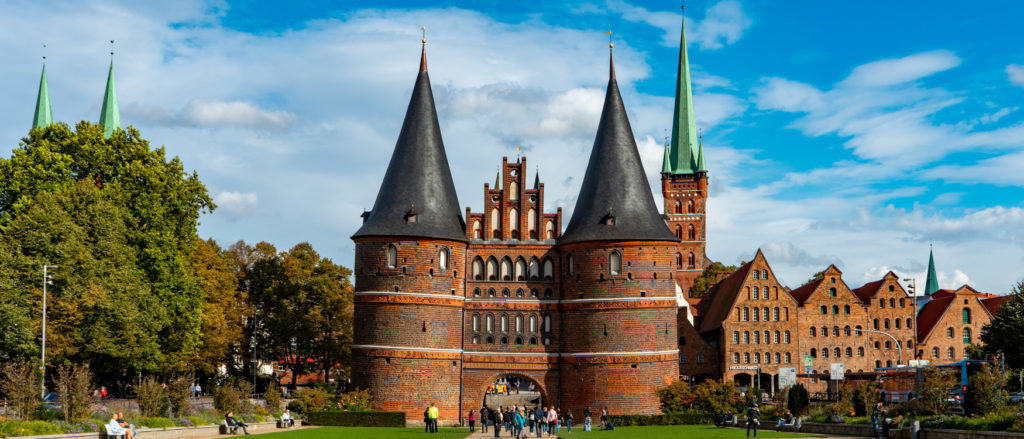
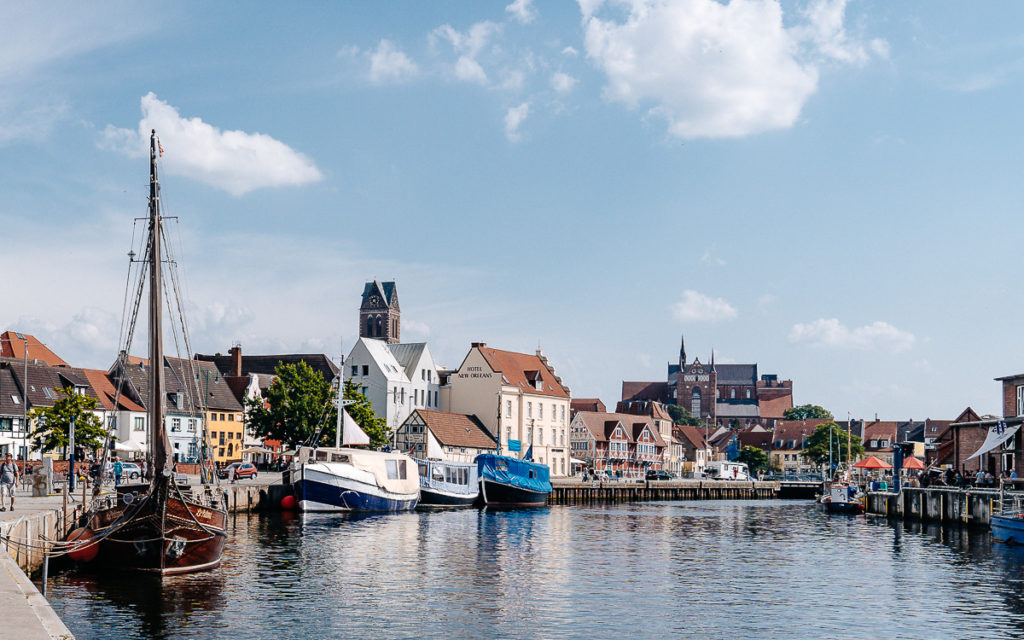

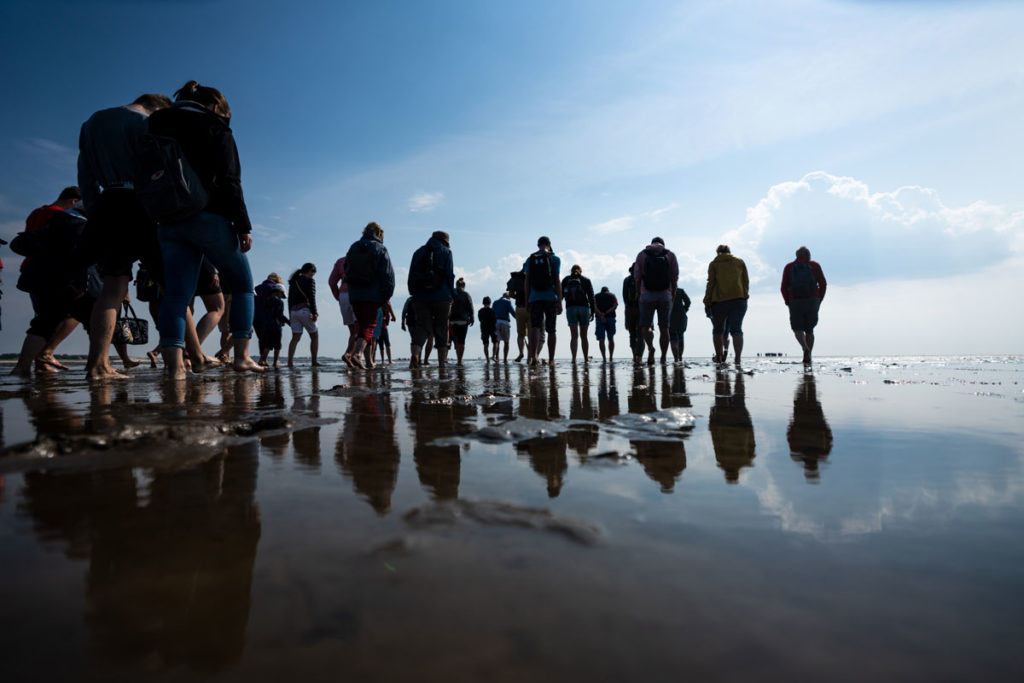
Do you have any other ideas for motorhome tours in Germany?
Leave me a comment at the end of the article, I look forward to it!
☕️. Blogging costs time and money. Would you like to appreciate our work so that we can continue to share our tips with you as experts? We would appreciate a tip in our virtual coffee fund at PayPal → VIEL UNTERWEGS Kaffeekasse. Thanks to you, we can put all our passion and heart and soul into this blog.
Transparency and trust: This article contains referral links (affiliate links). This means no additional costs for you. But: If you buy something via a link, I will receive a small commission. You don't incur any additional costs, but you help me to run this site and support the blog and my free information and expert tips for you! Thank you very much!

Hi ich bin Katrin!
I'm Katrin, I travel a lot and am a real travel expert! I am eager to explore the whole world with a Camper van or backpack. Furthermore, I founded this travel blog to share my experiences with you!
You might also be interested in these articles
- Tips for planning your road trip
- Deutsche Alpenstraße (German Alpine Road)
- Burgenstraße (Castle Road)
- Black Forest - Lake Constance - Swabian Alb
- Deutsche Alleenstraße (German avenue road)
- Deutsche Fachwerkstraße (German Half-Timbered House Route)
- Deutsche Märchenstraße (German Fairytale Route)
- Deutsche Weinstraße (German Wine Route)
- Deutsche Vulkanstraße (German Volcano Route)
- Romantic Road (Romantische Straße)
- Nordic UNESCO World Heritage Route No. 1
